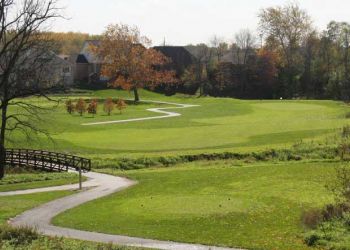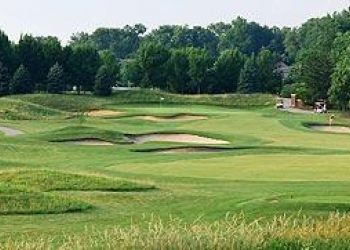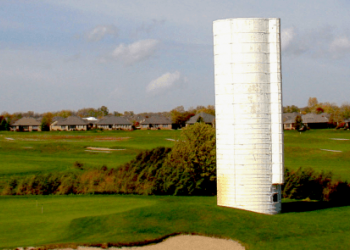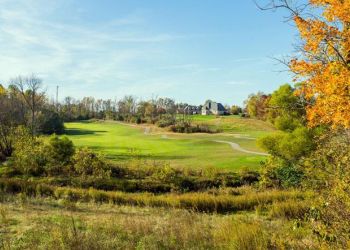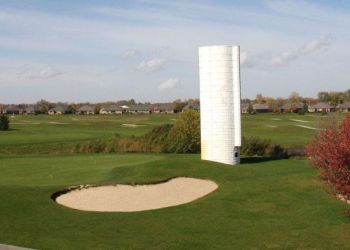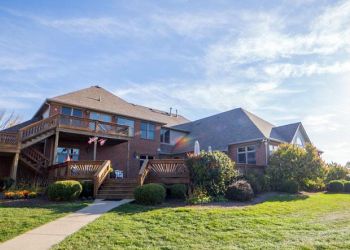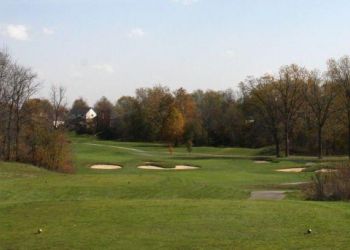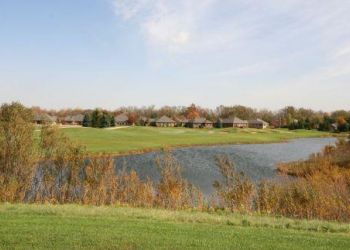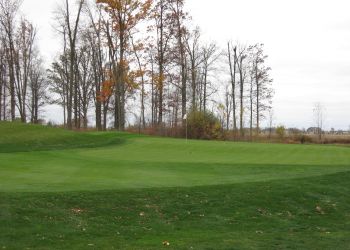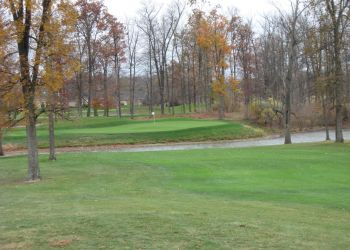-
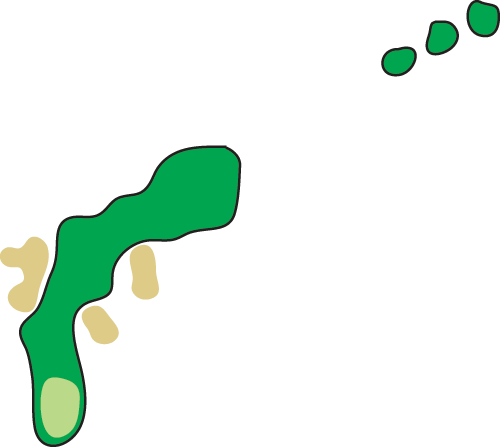
Old Tom Morris
The opening hole is as gentle as its dog leg to the left. Long hitters are tempted to carry the bunkers on the left and drive the green, while shorter hitters place an iron in the fairway leaving them a short iron to the green.
-

Westward Ho!
This is the first of five par 3’s and is the only one you can see the entire putting surface. Take advantage of being able to see the hole location and select the right club.
-

Long
The name of this hole pretty much sums it up, but narrow could also be used to describe the tee shot. With trees right and left and a pond short of the fairway this tee shot is anything but inviting.
-

Dub’s Dread
A deceptive tee shot awaits you at Dub’s Dread. While it looks like a wide open tee shot the landing area is quite narrow if you want a clear shot at the green. Once in the fairway a precision iron shot is required to clear the pond and hit the tiered green.
-
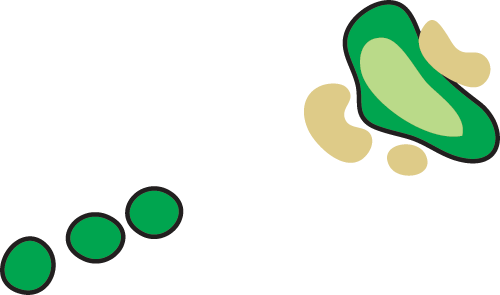
Heathen
The shortest hole on the course does not make it the easiest hole on the course. A forced carry to a blind green provides the challenge.
-
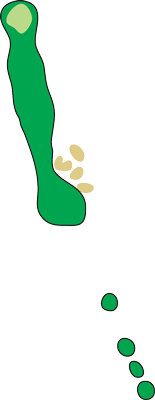
Royal Dornoch
The final four holes on the front 9 are “pure” links minus the ocean. Utilize the mound on the left to help hit this fairway.
-

Knave
An expansive fairway that moves slightly left to right awaits you. The slight uphill approach shot makes selecting the appropriate club difficult.
-

Purgatory
The name of the hole is appropriate as it is the longest par 4 on the course. You can feel like you are in Purgatory if you do not hit the shots you envision.
-

Poseidon’s Grave
The front 9 comes to an end with an enticing par 5 leaving you many options. A good drive gives you the opportunity to go for the green in two, but with a
-
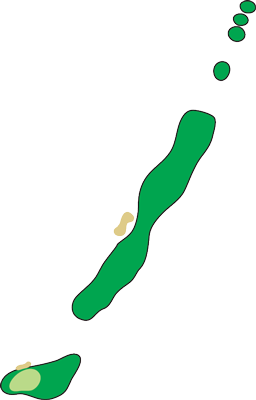
Bill Diddle
The back 9 begins as the front 9 ended, with a Par 5. After a good tee shot you have the option to get home in two, but White Lick Creek awaits any shot short or right of the green.
-
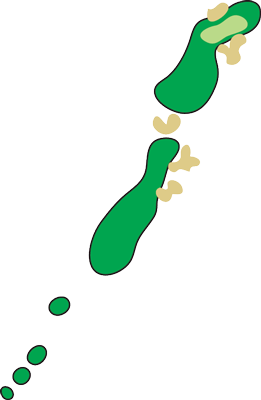
Trial
The name of the hole should be Trial and Error because the eleventh is awaiting any errant tee or approach shot. Two precise shots are required on this hole in order to walk away with a par.
-
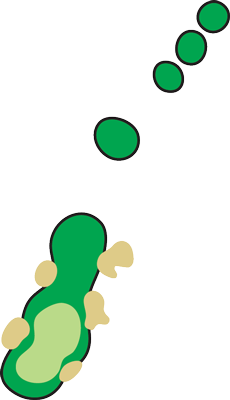
James Braid
This is the first of three par 3’s on the back 9. The green is narrow, long and surrounded by bunkers. Trust the yardage and make a good swing.
-

White Lick
Let the elevation begin. This gorgeous downhill tee shot provides plenty of room left of the fairway, but any shot floating to the right might sink into White Lick Creek.
-

Widow
Another par three requiring accuracy. The green is much larger than it appears from the tee. It is very narrow but quite long. The front right bunker is set back from the green and should not affect a solidly struck shot. Playing to the middle of this green is advised. The creek to the left results in a penalty and missing to the right requires a deft touch for recovery. This hole seems to have the attitude that the Widow is still in mourning.
-
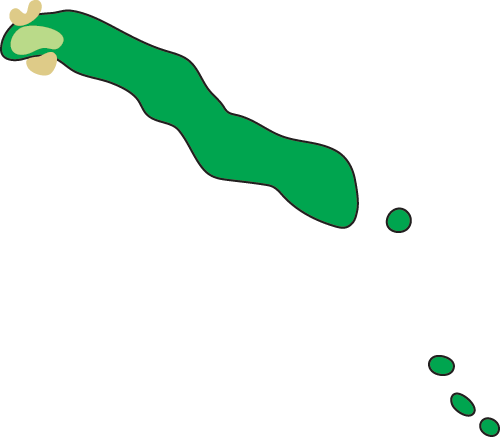
Donald Ross
Simply a beautiful golf hole named for the preeminent golf architect. From Scotland, Ross studied club making and greenkeeping under Old Tom Morris at St. Andrews. After his apprenticeship, he became the professional at Dornoch. Ross became enamored with the plateau greens and used that concept for many of his designs. Ross is best known for his designs at Pinehurst.
The downhill tee shot should be played to the right side of the fairway for the best angle to the green. The green is small and sits between two deep bunkers. The "bail out" is to the right of the green where a closely mown chipping area awaits. An up and down from here is not too difficult. The slightly uphill approach shot requires excellent distance control and good spin to find the putting surface.
-

Cottonwood
This hole is named for the large cottonwood trees seen on the tee shot and the one behind the-green. This is a great opportunity to make up for any lost shots on the two difficult par threes previous to this hole. The player has many options off the tee as defined by the fairway bunkers. Cutting the corner does require a long tee shot, most likely longer than it looks. If the corner is not made, it is nearly impossible to get to the green in two shots out of the fairway bunkers. Therefore it is imperative to have the ball on the grass off the tee. The green sits behind a bunker that flanks the front right of the putting surface. This requires a ball to be flown to the putting surface to access the hole location. To hit the green in two shots requires distance control and spin as the creek behind the green comes into play for a shot that is "too hot". The best lay up position is to the left side of the fairway. Be careful as out of bounds runs along the left side of the hole. The putting surface is gently contoured-read your putts carefully.
-
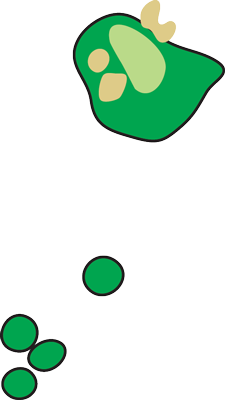
Short
As customary in Scotland on many golf course a short par three is named, simply, Short. This golf hole presents many different challenges depending upon the hole location. A left to right or right to left shot could be required. If the pin is located on the left side, a high, soft shot just over the bunkers is needed. The greens contour, which runs away from the player will feed the ball to the center of the green. A shot not played softly may run into the back bunker. When the hole is on the right side, a grassy hollow to the right of the putting surface comes into play. An up and down from this is testy. A rise in the putting surface divides the left and right halves of the green. If the player is not on the same half of the green as the hole location, the approach putt will be an examination of the players putting skill.
-
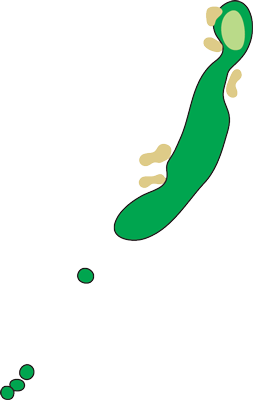
Home
The home hole offers a stern test of the player's mettle. It is a long par four that requires accuracy and touch on any and every shot. The tee shot is best played to the right side of the fairway for the best angle to the green. Too far right and the creek comes into play. The shortest route to the green brings two fairway bunkers into play on the tee shot. The uphill approach shot into the two level green requires precision. Any shot missing the putting surface requires clever and resourceful shotmaking to get up and down. Club selection is very important so as to play to the correct level of the green if a birdie is in your sight. A great finishing hole to a great test of golf at West Chase Golf Club.


